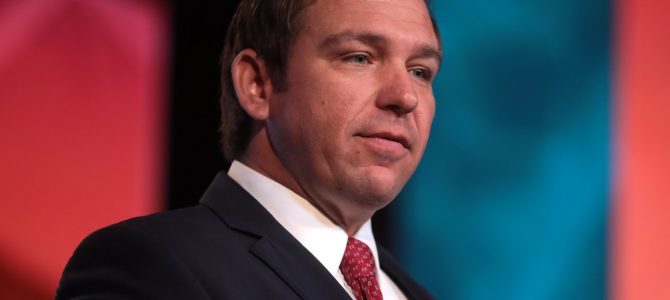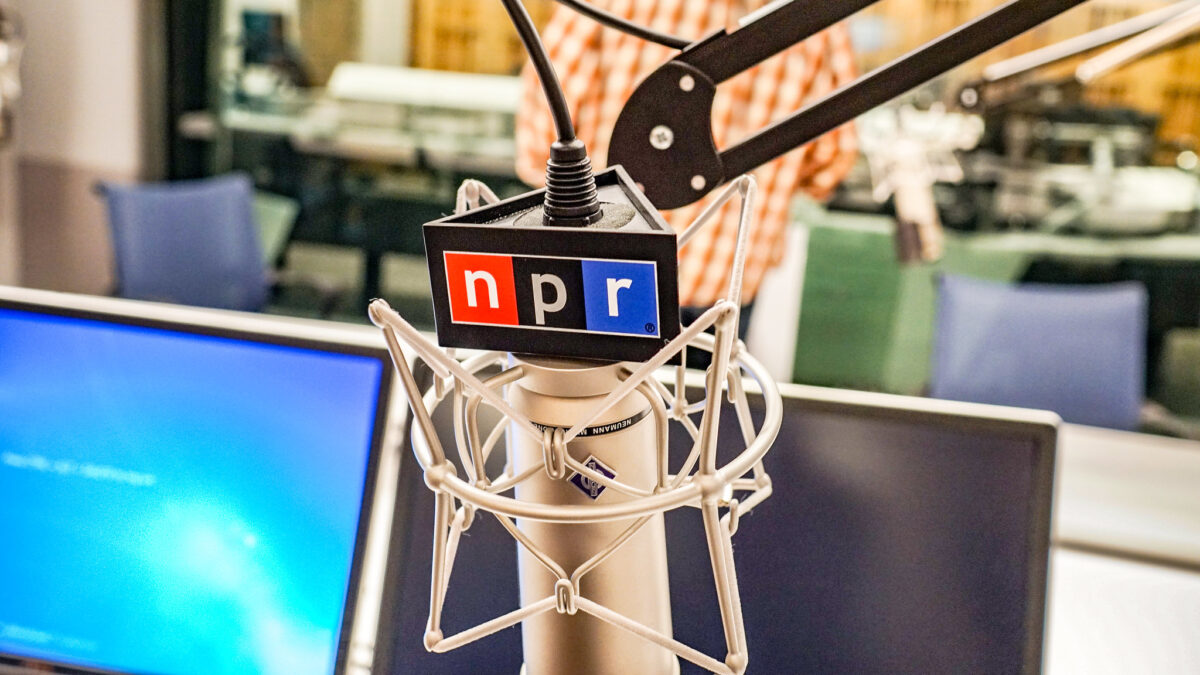
Our health and economy are not the only things suffering under coronavirus. Media and political hypocrisy and partisan double standards are at crisis levels.
The important role of a free press is being jettisoned to achieve leftist political outcomes. When a free press debases itself in this way, the public loses confidence in the press and devolves to cynicism. This is hurting health policy and the body politic.
Expecting every politician to have gotten everything right from day one would be patently unfair. They’re operating with limited information and looked at predictions we now know are demonstrably wrong.
The news problem has been applying different standards and coming to different political conclusions when looking at the same data. Our national crisis is not the time for petty partisanship, especially from our press.
A Tale of Two States—and One ‘News’ Service
Compare CNN’s COVID-19 coverage in California to Florida and you’ll see the problem. Here, on April 10, is Editor-at-Large and political reporter Chris Cillizza on Florida Gov. Ron DeSantis: “Unfortunately for Republican Florida Gov. Ron DeSantis, the fight against coronavirus has exposed the fact that he may simply not be up to this moment in history.”
The basis for “the fact” the governor is not up to his job? DeSantis’s statement, “I don’t think nationwide there’s been a single fatality under 25. For whatever reason it just doesn’t seem to threaten, you know, kids.”
Cillizza pounced. He cited the Centers for Disease Control (CDC) showing five people younger than 25 years old have died from COVID-19. Three were under 15. With 330,000,000 people in the United States, that means a full 0.000002 percent of the country had died of COVID-19 while under 25.
Cillizza neglects the larger point, which DeSantis correctly made: the virus has a much greater effect on older people. The CDC’s Provisional Death Count on April 23 showed 23,358 had died, and only three younger than 15: 99.99 percent were not the kids DeSantis spoke of.
Despite DeSantis prefacing his statement with “I think,” 99.99 percent wasn’t good enough for CNN. DeSantis was off by 0.01 percent, consistent with CDC findings, and understood by 99.99 percent of his audience—just not by CNN’s editor-at-large: “The governor of ANY state” Cillizza wrote, “shouldn’t be making statements like ‘the data has been 100% consistent’ if he, uh, doesn’t know that with 100% accuracy.”
Cillizza concludes his “news” story: “Moments like this one are clarifying. When a fearful and anxious public turns to its government for guidance and leadership, there’s nowhere for people like the governor of a state to hide from the massive responsibility.”
That’s true. This moment clarifies not just how politicians are doing, and where their biases are, but also of those covering them. CNN is OK publishing an obvious hit piece in a time of national crisis. Their editor wants “a fearful and anxious public” to turn to its government for guidance. Where, if not Florida, should they turn for bold leadership and accurate foresight on this crisis?
CNN on California
Consider this praise article a day earlier, lauding California and its governor, Gavin Newsom. Newsom was first to order statewide restrictions; he ordered millions of masks; he over-acquired ventilators; California leaders took it seriously and tens of thousands of lives were saved.
The article does not explore why, just a few days before the Institute for Health Metrics and Evaluation’s projected “peak resource” day, Newsom would send ventilators out of the state. It doesn’t remind us that, on March 18, the governor wrote President Trump that 25.5 million Californians could be infected, with some 5 million being hospitalized.
The governor was trying to increase California’s 20,000-plus hospital beds to 100,000 beds. But by March 20, the governor’s head of Health and Human Services confirmed the governor’s numbers were off, based on bad modeling. On April 23, the IHME predicted a total need of only 2,503 beds, with only 33,261 cases statewide.
100,000 beds to an actual need of 2,503 is 2.5 percent accuracy—“bad modeling” indeed. Total cases in California to date: 33,261. Only 25,466,739 more to hit Newsom’s number. After California’s own “peak,” we see Newsom was 0.1 percent correct, 99.9 percent incorrect. No word from CNN on these numbers.
Further Comparison Between California and Florida
Here are a few more considerations for the Florida-California comparison.
- California’s population is 39.5 million, Florida’s is 21.5 million.
- The average age in each state is: California, 36, Florida, 42—Floridians an average of six years older.
- As of April 23, California had 33,261 one cases and 1,268 COVID-19 deaths;
- Florida had 27,869 cases and 867 deaths. Meaning, 0.08 percent and 0.1 percent of those states’ populations were infected.
- California’s death-per-infected rate: 3.8 percent, Florida’s: 3.1 percent, with an equally small percentage of each state’s population having died, less than 0.005 percent.
- California’s 39.5 million people are spread out over 163,696 square miles, Florida’s 21.5 million are over 65,755 square miles—thus, California has 241.3 people per mile, Florida has 327.
- California’s restrictions started on March 19, Florida’s two weeks later on April 3. California’s peak resource date was April 13, Florida’s was earlier, on April 12. According to IHME forecasts, both states had substantially more hospital and ICU beds than needed.
Neither governor had a crystal ball to perfectly predict where this crisis was going. But one got fawning coverage, the other attacked. This, even though Florida has an older population, is more densely populated, and DeSantis kept its economy going longer.
Florida’s hospitals were not overwhelmed. Florida and California performed equally well, although Florida had relative disadvantages. But DeSantis, when faced with the exact same challenges, created an environment where far fewer jobs were lost. He allowed Floridians to work longer, destroying fewer jobs, while not overwhelming Florida’s health-care system.
This level-headedness will benefit Florida as it reopens. Entrepreneurs, investors, and employees will have the confidence to start anew in Florida, knowing their governor isn’t prone to panic or looking for an excuse to shut them down again. So why is DeSantis not “up to this moment”?
A New York State of Mind
If we use data to rate states’ performance and CNN says Florida’s governor is failing, we should expect to read daily calls for New York Gov. Andrew Cuomo’s resignation for gross incompetence. Instead, CNN’s March 28 headline, when New York was the COVID-19 epicenter, read “The Surprising Rise of Andrew Cuomo.” “Surprising” if you are expecting consistency from CNN’s coverage.
New York’s population is 19.5 million, averaging 38 years old. On April 23, it had 257,216 coronavirus cases with 15,302 deaths. With 54,556 square miles, its density is 357 people per square mile, with significantly more density in New York City. It closed just days after California, on March 22, and peaked its resources on April 8.
Florida’s density is much closer to New York’s than to California’s, and New Yorkers are younger than Floridians. But New York has had nearly 10 times the cases and 20 times the deaths. The IHME shows New York exceeded its hospital needs—likely increasing the death toll. Not so in Florida. By every measure, Florida vastly outperformed New York.
The point is not that Cuomo blew it and Newsom or DeSantis were brilliant. They must worry about their citizens’ health and the health of their states’ economies, freedoms, and futures. And they are all trying to do this with ever-changing data and questionable forecasting models.
We cannot know with certainty what the future holds. But we know with certainty there are no real differences health-wise between the leadership of Newsom and DeSantis—just differences in their press coverage.
That coverage also ignores the economic consequences of their decisions. As of April 16, California (first with the stay-home order) had lost 2.8 million jobs (7 percent of the entire state), New York 1.2 million (4 percent of the state), yet Florida just 654,000 (2 percent of the state.) One state of the three has the best unemployment and health numbers—but not the one CNN praises.
A Pleasant Peninsula?
Another high-media-profile state in this is Michigan. Its lost 1 million jobs, or from 10 percent of its population. Despite shutting down its economy two weeks before Florida, Michigan has had more than 33,000 cases and 2,700 deaths—both higher than Florida. Michigan has worse results, with an earlier shutdown, more draconian rules, and its population is less than half Florida’s.
Despite this woeful performance—especially compared to Florida’s—Michigan’s Gov. Whitmer has been CNN’s Cillizza’s second and fourth-ranked pick for vice president. What explains the different CNN coverage? Obviously not job losses or COVID-19 statistics. If one judges based on the governors’ statistical performances, Florida and California seem tied with Michigan and New York is well, well behind.
If Numbers Don’t Guide CNN’s Coverage, What Does?
A governor sparking protests over her governmental overreach, who has seen the state’s hospitals overwhelmed, and has lost more than 1 million jobs, can be a CNN top pick for vice president, but a governor better in every category—whose state has twice the population, with fewer cases and deaths—isn’t performing?
DeSantis has offered a reasonable and successful response to the virus. CNN finds this intolerable, and not because it cares about any state’s health or economy. CNN cares because DeSantis has a political future.
CNN is trying to establish a narrative that he failed. That is not reporting, it is creating a fictional story. But this political story telling has real-world consequences. It distorts our health and economic perceptions. It delays people’s ability to go back to work. Their “reporting” is dangerous.
But CNN is playing the long game, trying to hurt a successful Republican’s future. To CNN, this isn’t about COVID-19, it is about November 2020 and 2024. For consistency on COVID-19 reporting, don’t look to the statistics: look to the letter “R” or “D” next to the governor’s name.









